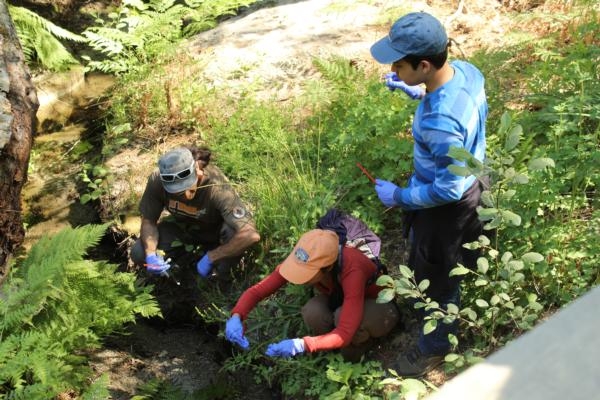Who can participate in citizen science? Everyone. Our 4,000 certified California Naturalists recorded over 7,000 volunteer hours under citizen science in 2019. Though citizen science is a relatively new term, people have been participating and contributing to scientific research throughout history. With the field growing immensely in the last 10 years, technological advances have helped researchers involve more people, communities have come together to answer important questions, different groups have contributed and shared information, and so much more. It's a powerful tool to teach about and experience science.
However, many in the field have begun to acknowledge a problem: the name. Citizen science - currently the most recognizable term for this practice - implies that citizens are the ones who may contribute to science. According to the Public Policy Institute of California, California is home to almost 11 million immigrants, making up more relative to its population than any other state. The Center for Migration Studies reports 23% of immigrants in California are undocumented. The word "citizen" doesn't apply to over 2.5 million Californians.
If we want everyone to feel welcome to the field and participate in science, it's important that we re-evaluate the use of the word "citizen." To describe the two approaches, a community-driven "community science" and a more individual-driven "citizen science," the CalNat program is moving forward in referring to them both as one, Participatory Science (read more about the distinction here). Inspired by the recent international protests surrounding anti-Black racism and police brutality, the CalNat team decided to make this small change of many stemming from our existing strategic plan to make our program more inclusive to more budding California Naturalists. While the field of Citizen Science as a whole continues discussions surrounding the use of "citizen," CalNat will transition to describing it in a way that includes all people who contribute to science: participatory science. As we learn more, we are open to re-evaluating this new term and growing alongside the field.
There's a few ways that our Naturalists and partner organizations can get involved in participatory science projects coming up!
Using our growing UC California Naturalist Certified Naturalists project, which certified naturalists can easily join on the main page, we can track the contributions of individual naturalists to biodiversity science. Once a certified naturalists joins the project, observations made in California over all time are counted.
California Biodiversity Day 2020 has created a survey to get a sense of the potential hosts for CA Biodiversity Day events this year and details on what those events will entail. This survey also is an opportunity for hosts to indicate resources that the organizers might be able to provide to ensure that their events are successful. This survey will be open until Wednesday, July 8.
Help collect data on some of the environmental impacts from COVID. Collect and send samples of specific long-growing grasses from your neighborhood to determine how the stay at home order has affected air quality across California. Added bonus: The species identified in the article are considered invasive. Please follow all local safety guidelines if choosing to participate.
